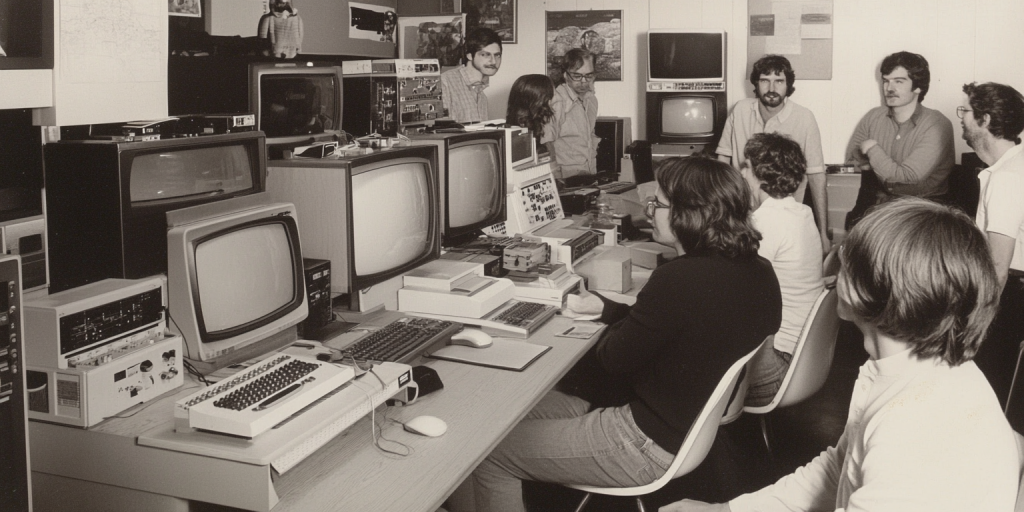Social media has come a long way since its inception, evolving from basic online communities to the immersive, complex platforms we use today. Whether for staying in touch with friends, networking, or following the latest trends, social media has become a central part of daily life. But where did it all begin? How did we move from early platforms like MySpace to the mobile-first, algorithm-driven apps that dominate today’s digital landscape?
In this article, we’ll take a journey through the history of social media, tracing the path from its earliest beginnings to the powerful tools we use to connect, share, and create in 2025.
The Early Beginnings: Pre-Social Media Networks (1970s-1990s)
Before the rise of social media as we know it, the idea of online interaction and digital communities was already taking shape in the 1970s and 1980s. Early systems such as ARPANET and Bulletin Board Systems (BBS) allowed users to communicate through text-based messages. These primitive forms of online interaction were limited, but they set the stage for the social networks that would follow.

In the 1990s, as the internet began to spread globally, more interactive platforms emerged. Geocities, for example, allowed users to create personal web pages that were rudimentary versions of modern blogs and profiles. At the same time, AOL Instant Messenger (AIM) and ICQ brought instant messaging into the mainstream, offering real-time communication between users. These early platforms laid the groundwork for what would soon become a global social media revolution.

The Rise of Early Social Networks (Late 1990s – Early 2000s)
As the internet matured, so did the concept of connecting with others online. The late 1990s saw the emergence of the first true social networking sites, and by the early 2000s, the first waves of social media began to take shape.
Six Degrees (1997)
One of the earliest examples of a social network was Six Degrees, founded by Andrew Weinreich in 1997. The site allowed users to create profiles, connect with friends, and even expand their network by linking to others in a social chain. Although Six Degrees was relatively short-lived (it shut down in 2001), it laid the foundation for the modern concept of online social networks by allowing individuals to interact and form connections with others.
Friendster (2002)
Another early platform was Friendster, launched in 2002. Friendster introduced the concept of an online social network where users could maintain profiles, upload photos, and connect with friends. Though Friendster was popular in the early 2000s, it eventually struggled with technical issues and was overtaken by newer platforms. Nevertheless, it was a precursor to the more widely adopted social networks that followed.
MySpace (2003)
Perhaps the most influential early social network, MySpace, was launched in 2003 and became the first truly massive social media platform. With features that allowed users to customize their profiles, share photos and music, and connect with friends, MySpace quickly became the dominant platform in the mid-2000s. It was especially popular with musicians, who used the site to promote their work and build fanbases.
MySpace’s success was largely due to its ability to cater to different types of content and personal expression, setting the stage for future platforms to do the same. However, as Facebook began to rise, MySpace’s user base declined rapidly, and the platform was eventually acquired and relaunched as a music-centric service.
The Rise of Facebook: The Dawn of a New Era (2004 – 2010)
The launch of Facebook in 2004 by Mark Zuckerberg and his college roommates at Harvard University marked a turning point in the history of social media. Originally limited to college students, Facebook quickly expanded to the broader public and became the dominant social network by the late 2000s. Unlike MySpace, which was highly customizable and chaotic in appearance, Facebook offered a streamlined interface that prioritized user connections and interaction.
Facebook’s growth was fueled by its ability to encourage users to create comprehensive profiles, share status updates, post photos, and interact with friends. It introduced the concept of a news feed, a real-time stream of posts from friends, which would later become a central feature for other social media platforms.
In 2010, Facebook had over 500 million active users, making it one of the most influential platforms in the world. The success of Facebook marked a clear shift in social media, as it focused on fostering connections between real-world friends, rather than promoting the personalized and often chaotic profiles seen on MySpace.
Twitter, Instagram, and the Emergence of New Platforms (2006 – 2010)
During the same period that Facebook rose to prominence, several other social platforms began to emerge, each with its own unique features and focus.
Twitter (2006)
Launched in 2006, Twitter revolutionized social media by introducing the concept of microblogging. Twitter allowed users to post short, 140-character updates (later expanded to 280 characters), creating a real-time, fast-paced platform where information could spread rapidly. Twitter became the go-to platform for breaking news, celebrity updates, and political discourse, establishing itself as a vital part of the social media landscape.
Instagram (2010)
In 2010, Instagram was launched by Kevin Systrom and Mike Krieger. Instagram quickly became popular for its simple photo-sharing capabilities, allowing users to edit and apply filters to their images. The introduction of Instagram stories in 2016, and the acquisition by Facebook (now Meta), solidified Instagram’s place as one of the most widely used social media platforms, especially for younger generations.
The Mobile Revolution and the Rise of Apps (2010 – Present)
As smartphones became more prevalent in the 2010s, social media began to shift from desktop-based interactions to mobile-first platforms. Social apps like Snapchat (2011), TikTok (2016), and WhatsApp (2009) leveraged mobile technology to offer more dynamic and engaging user experiences.
Snapchat (2011)
Launched in 2011, Snapchat introduced the concept of disappearing messages, which created a sense of urgency and intimacy in communication. With features like Stories (introduced in 2013), Snap Maps, and augmented reality filters, Snapchat became hugely popular, particularly among teenagers and young adults. The app’s emphasis on temporary content and real-time interaction set it apart from other social platforms.
TikTok (2016)
Originally launched as Musical.ly in 2014, TikTok gained significant traction after its rebranding in 2016. TikTok became the platform of choice for short-form, user-generated video content. With its viral challenges, dance trends, and personalized algorithm, TikTok quickly became one of the most downloaded apps worldwide, with over a billion active users by 2025. TikTok’s success has reshaped how content is created and consumed, particularly in the realms of entertainment and influencer marketing.

The Future of Social Media: 2025 and Beyond
As we move into 2025, social media continues to evolve, integrating newer technologies like artificial intelligence (AI), augmented reality (AR), and virtual reality (VR) into the user experience. Platforms like Easybie (a newer entrant) aim to offer a more streamlined, user-centric approach to social networking, focusing on privacy and personalized connections.
The future of social media is likely to be more immersive and integrated into our daily lives, with virtual communities, AI-driven content curation, and real-time interaction becoming the norm. New platforms will continue to emerge, each offering unique features and experiences, while established giants like Facebook, Instagram, and TikTok will adapt to changing user needs.
Conclusion
The history of social media is a fascinating journey of innovation, trial, and transformation. From MySpace’s customizable profiles to Facebook’s social connectivity, and the rapid rise of mobile-first apps like Instagram and TikTok, the evolution of social media reflects both changes in technology and shifts in how we communicate. As we look to the future, one thing is clear: social media will continue to shape our digital interactions, and the platforms of tomorrow will likely be as diverse, dynamic, and influential as those of today.


